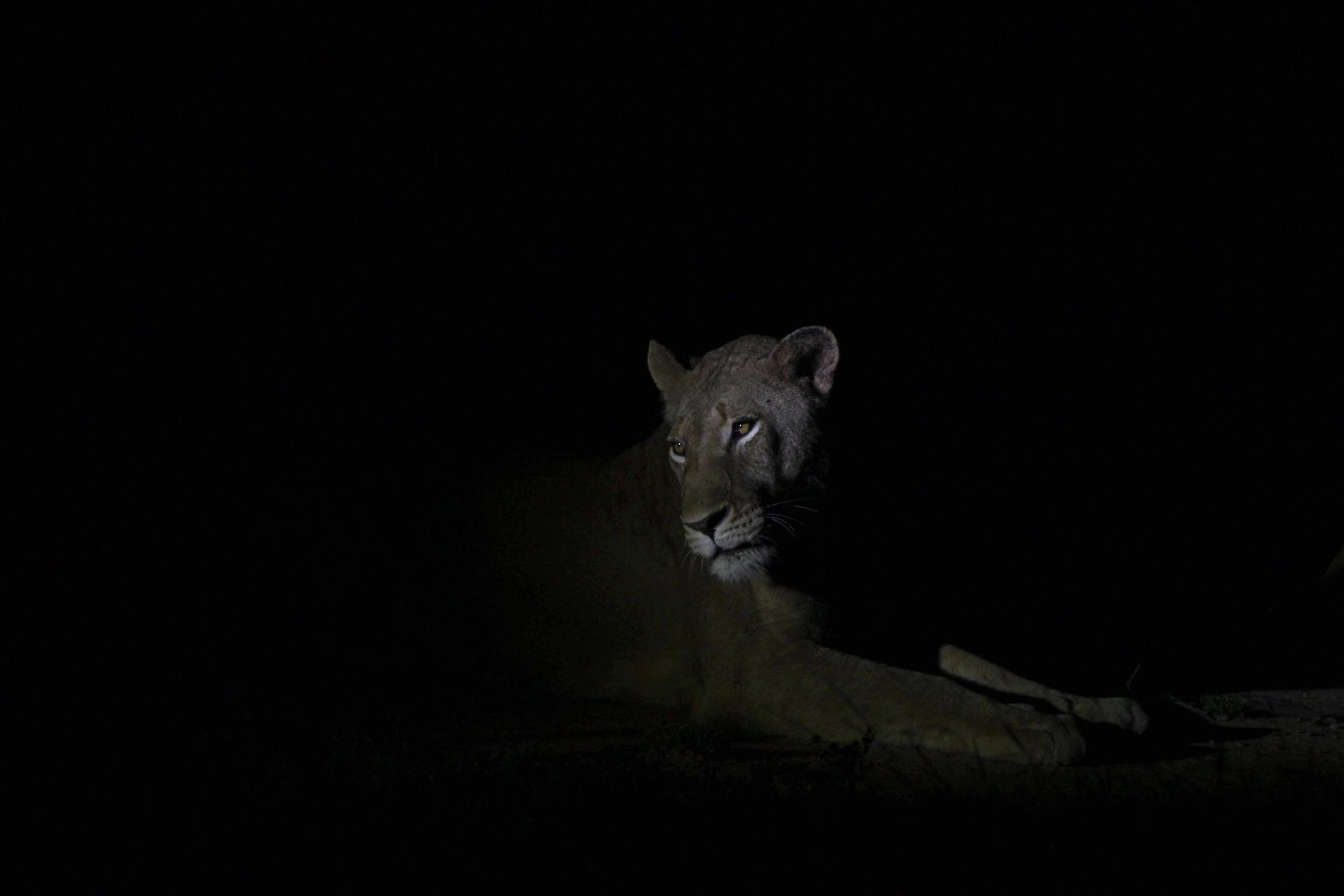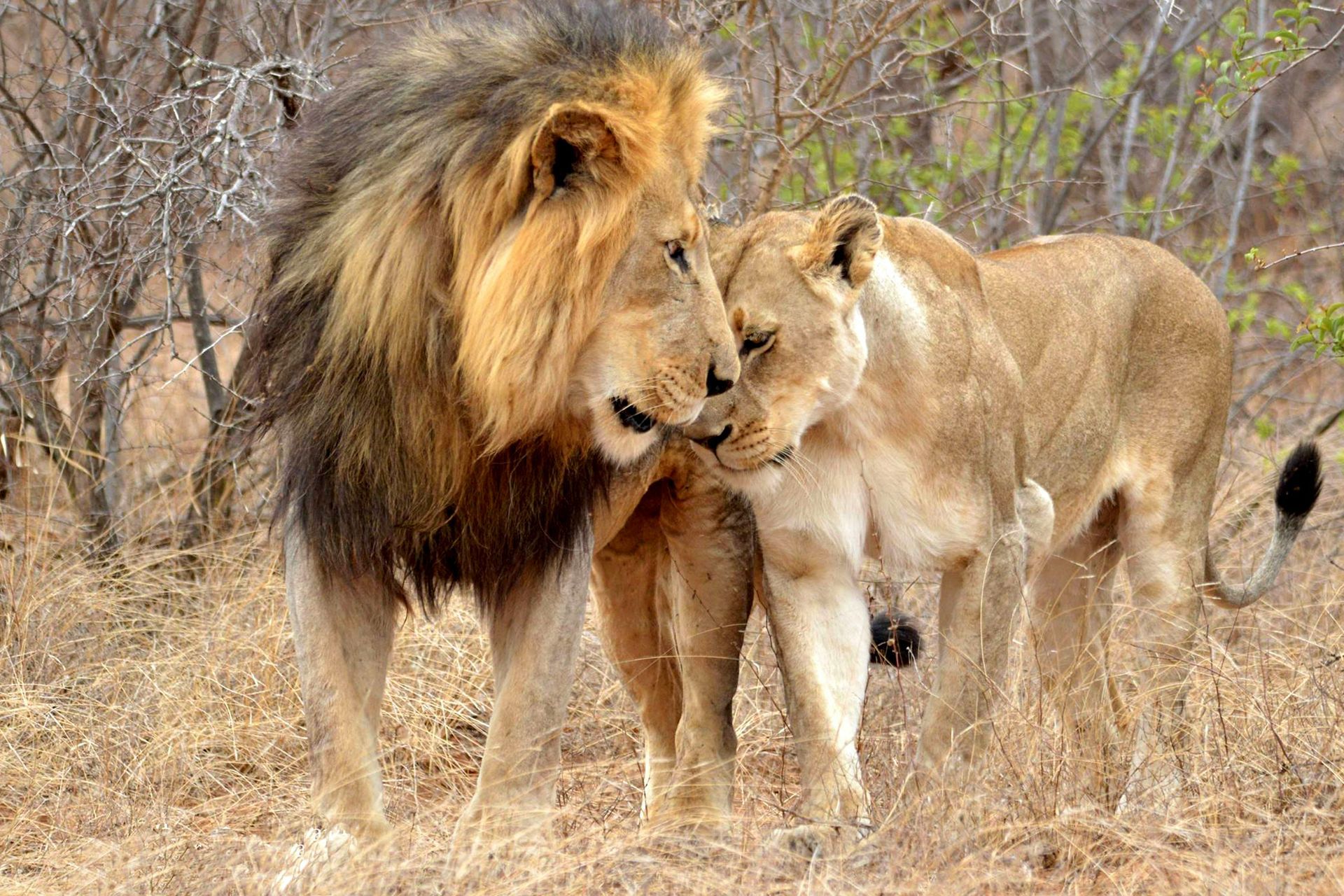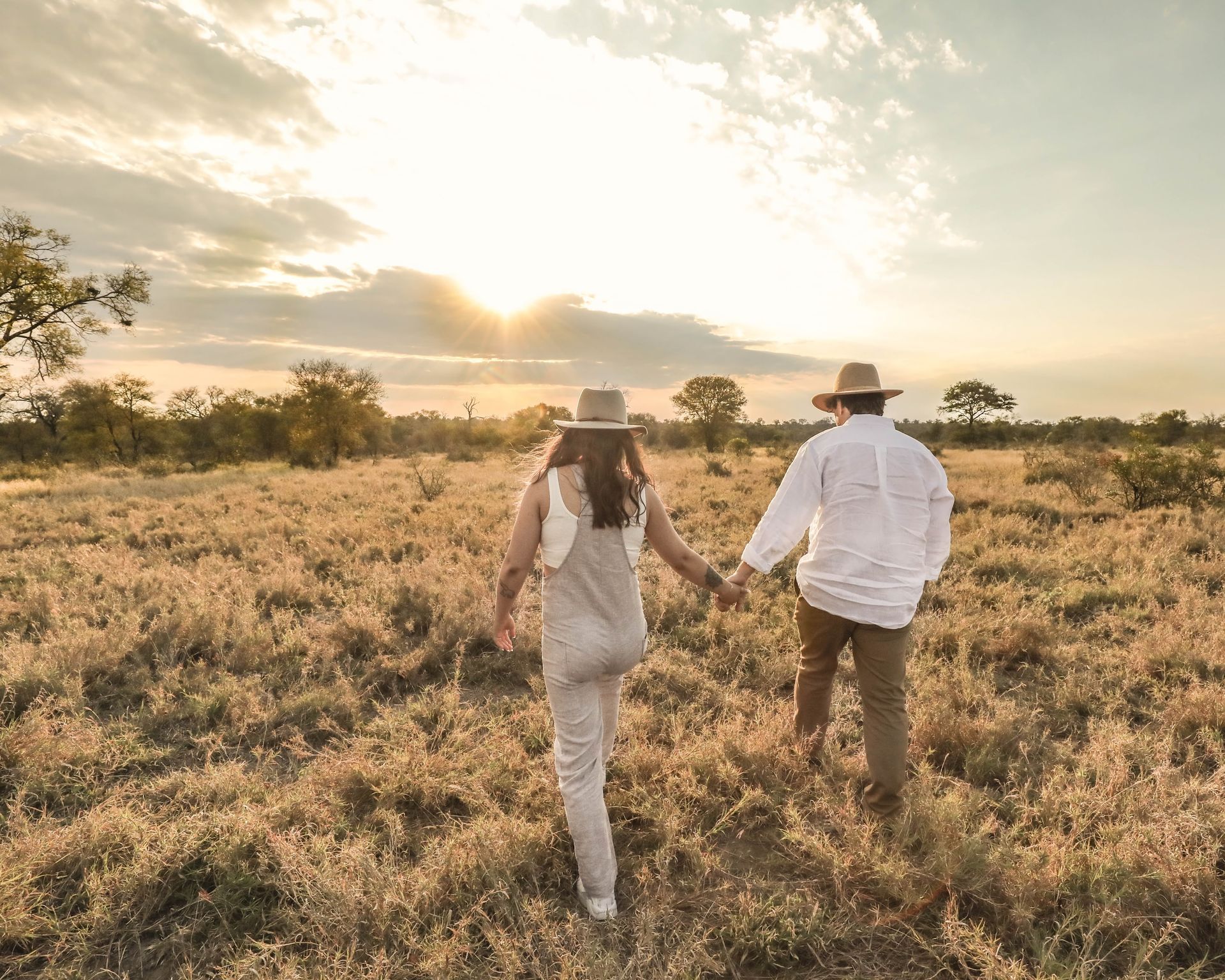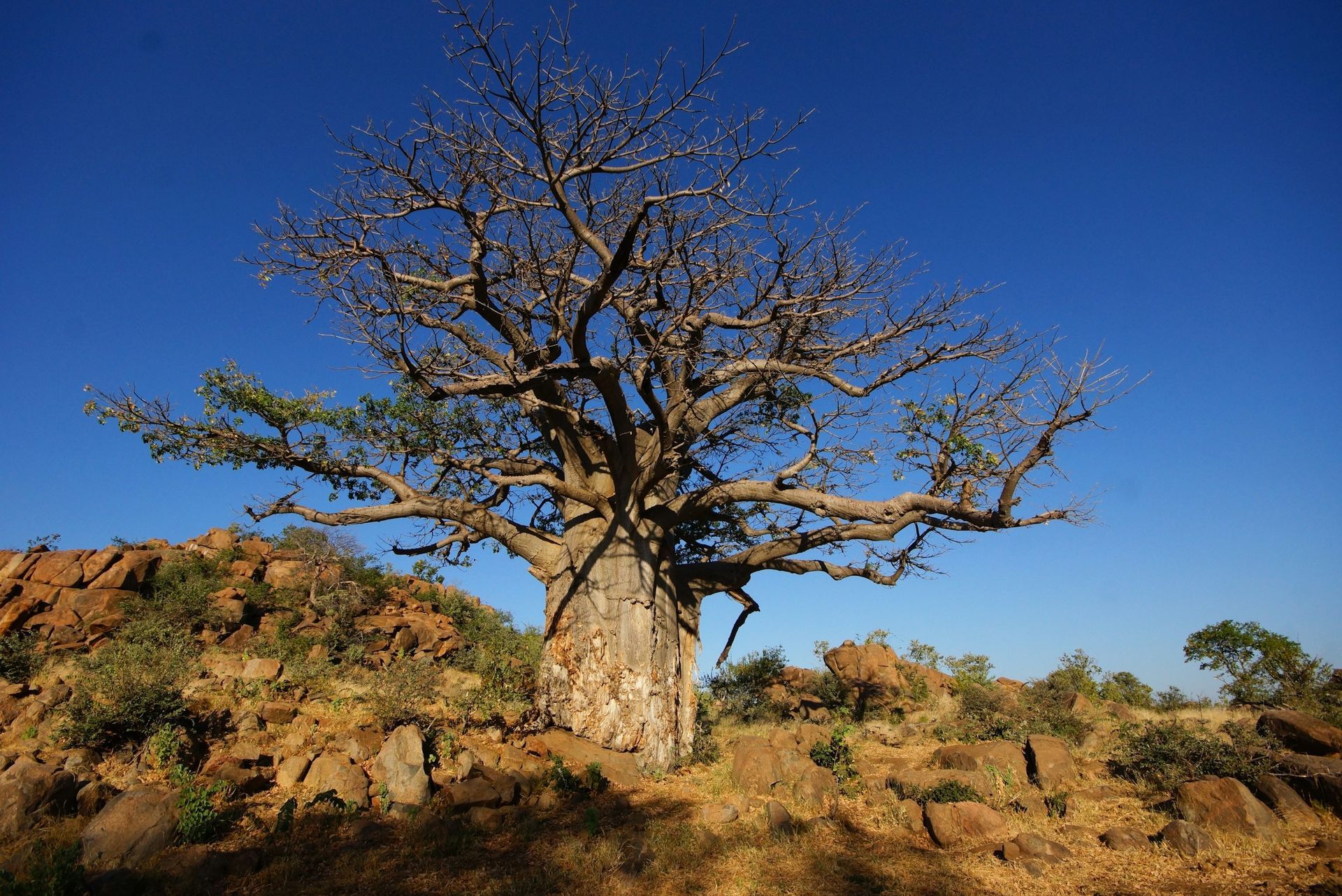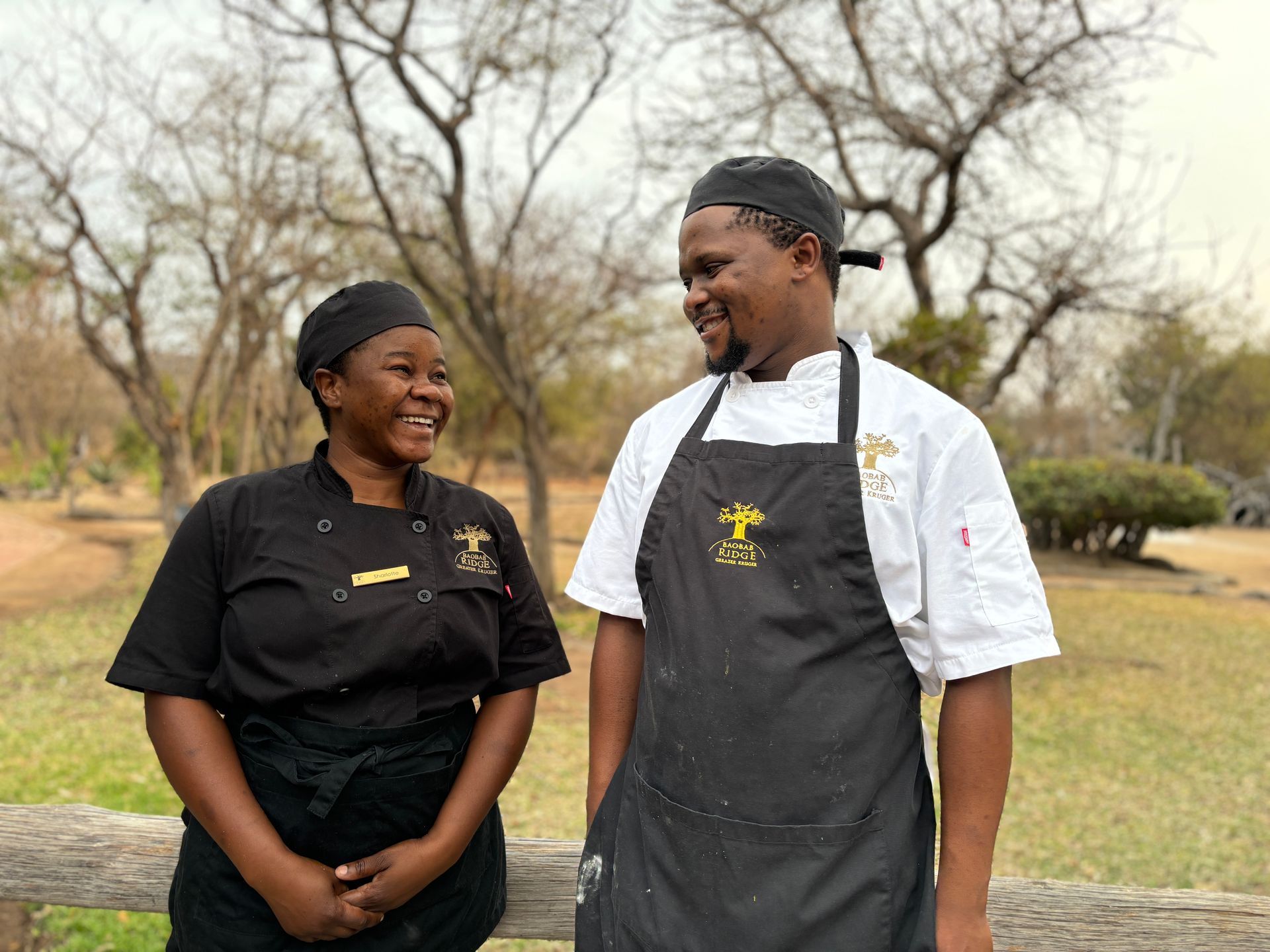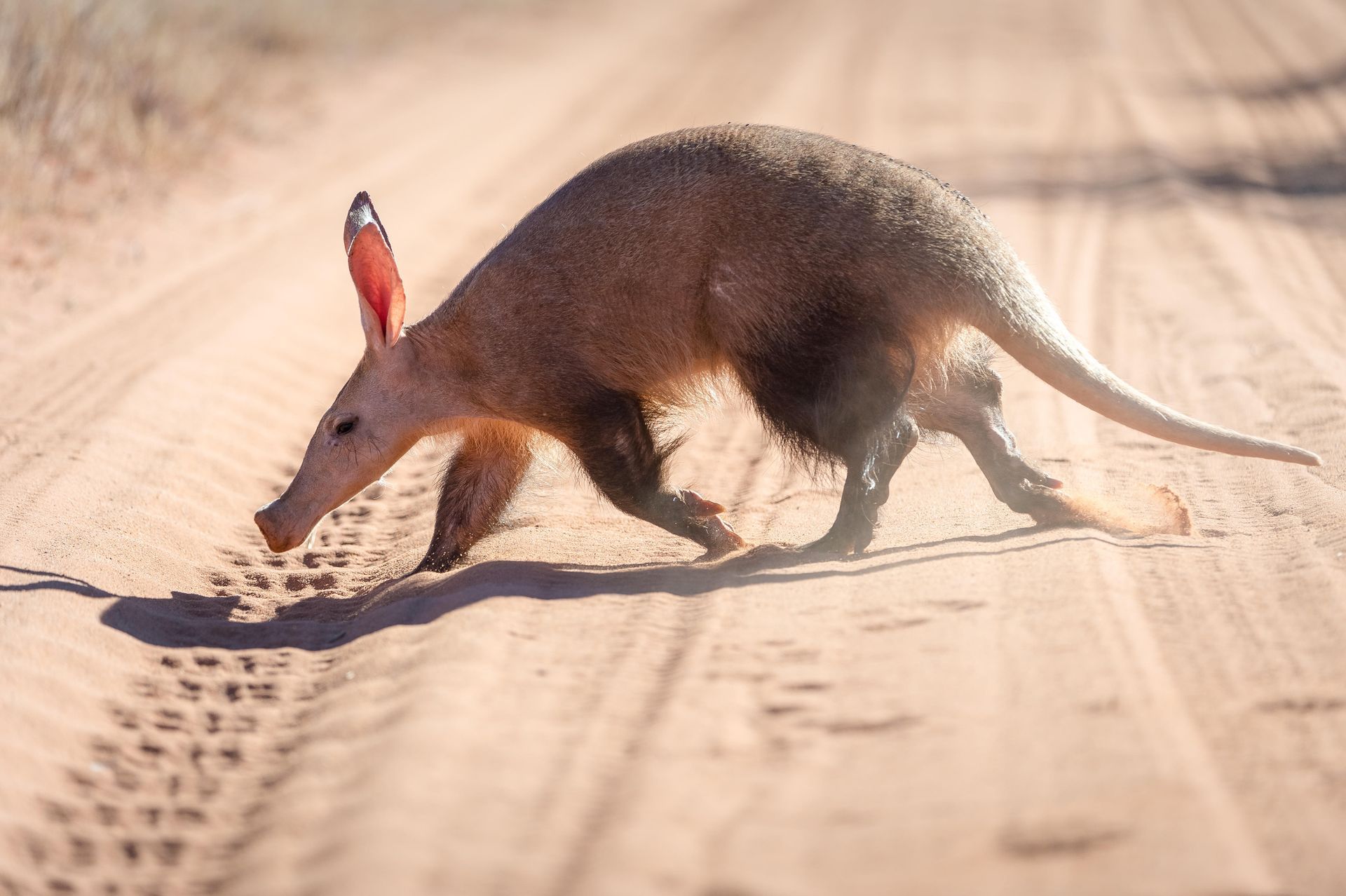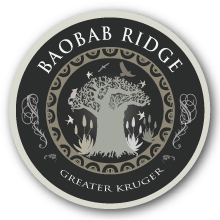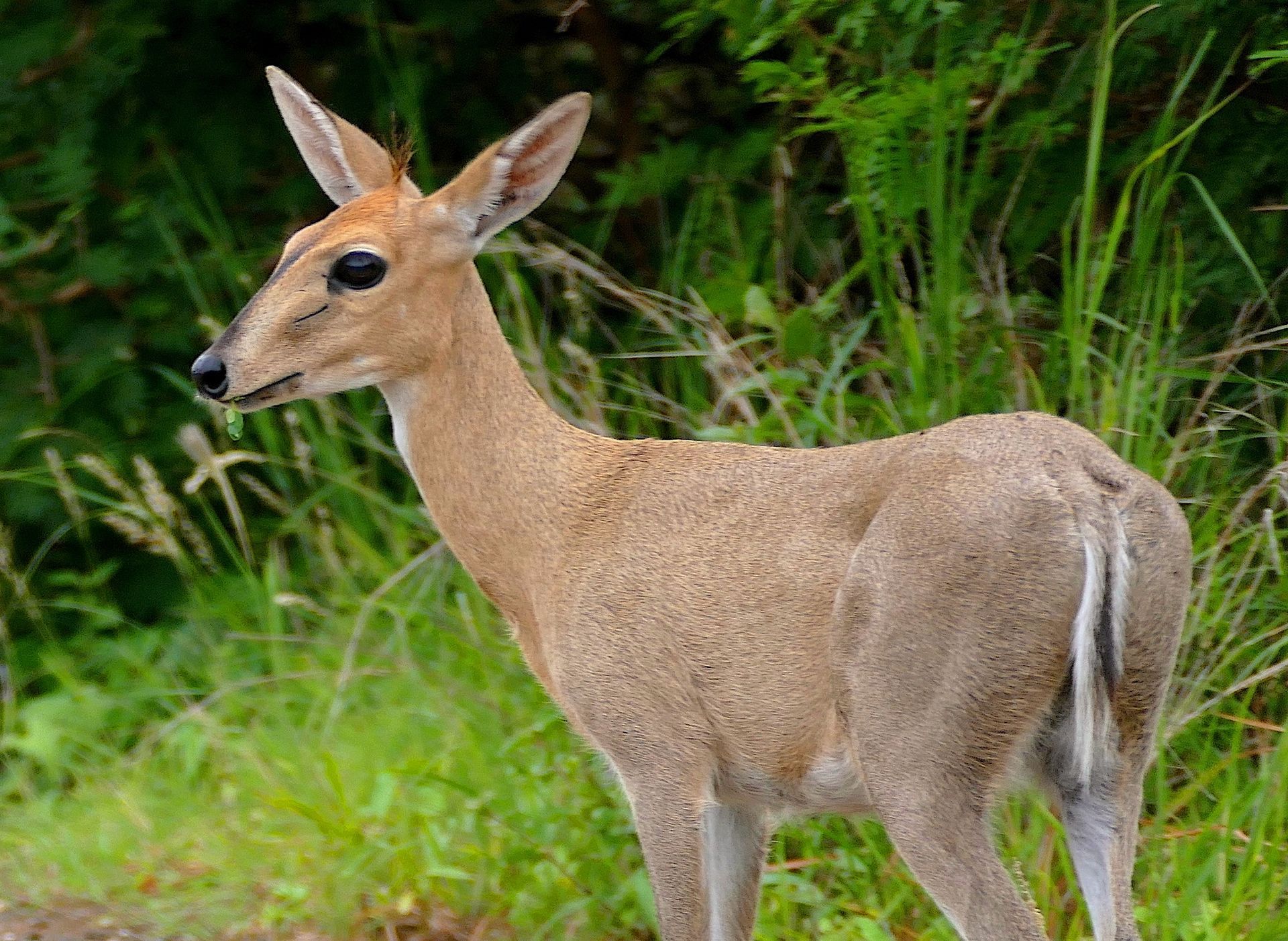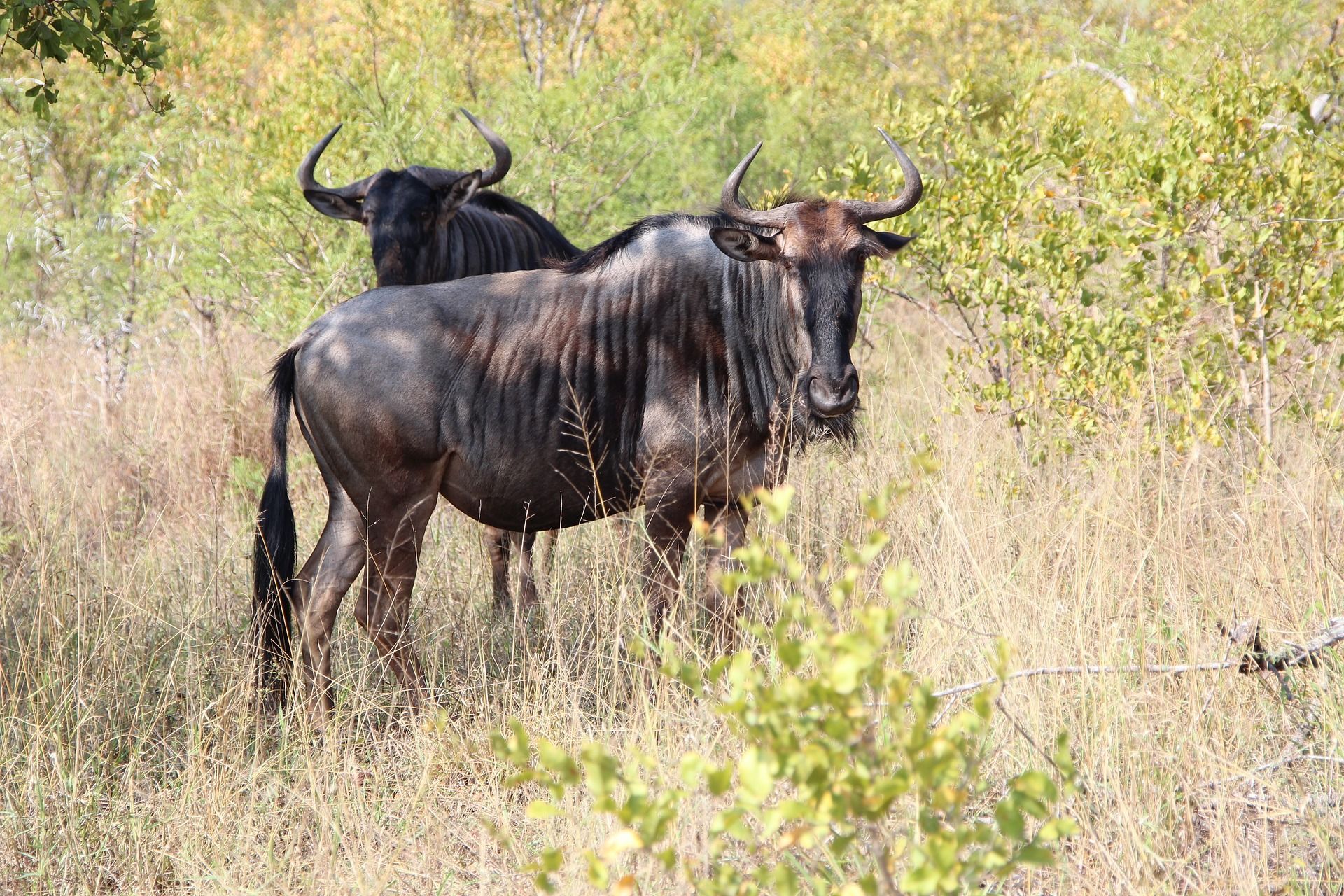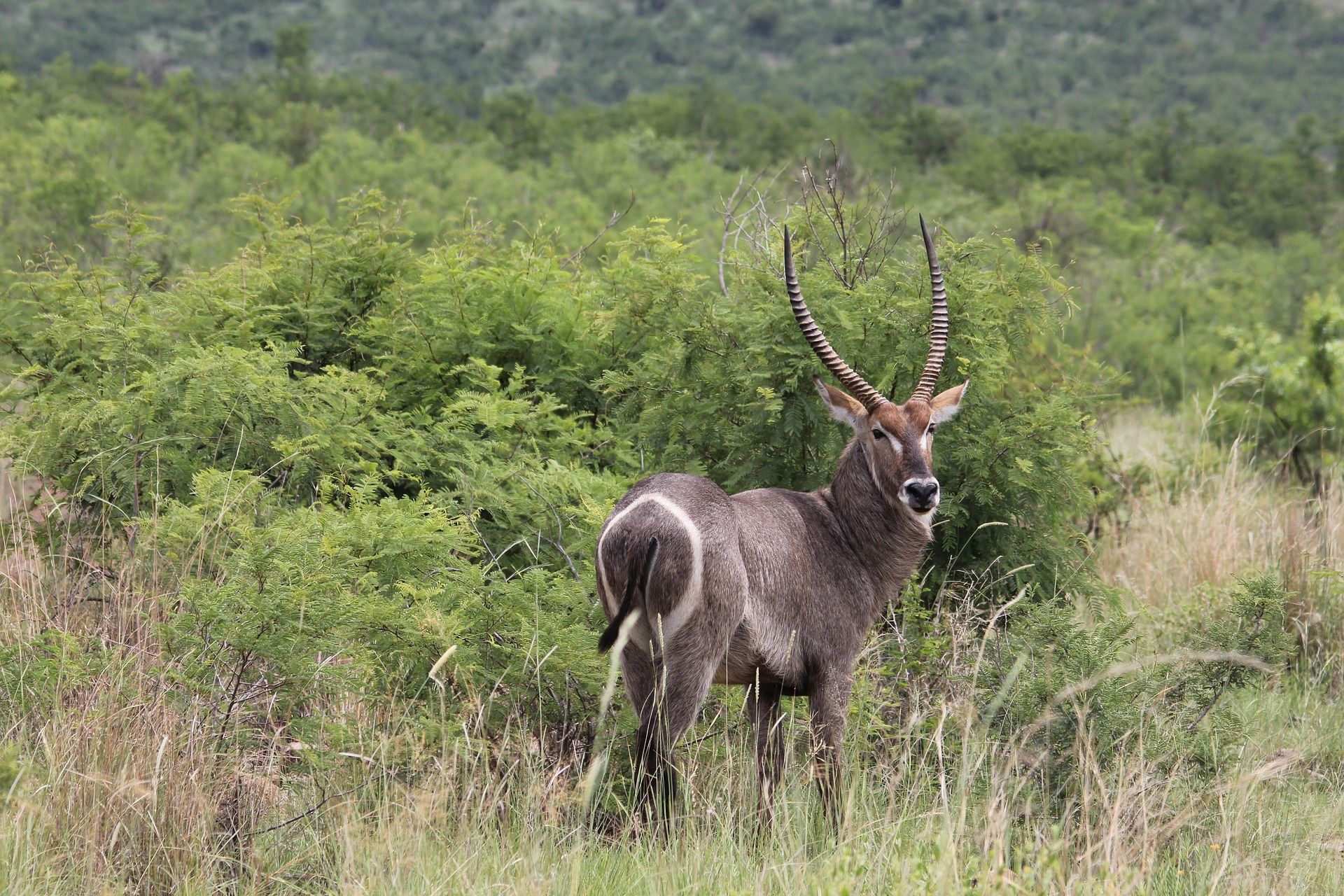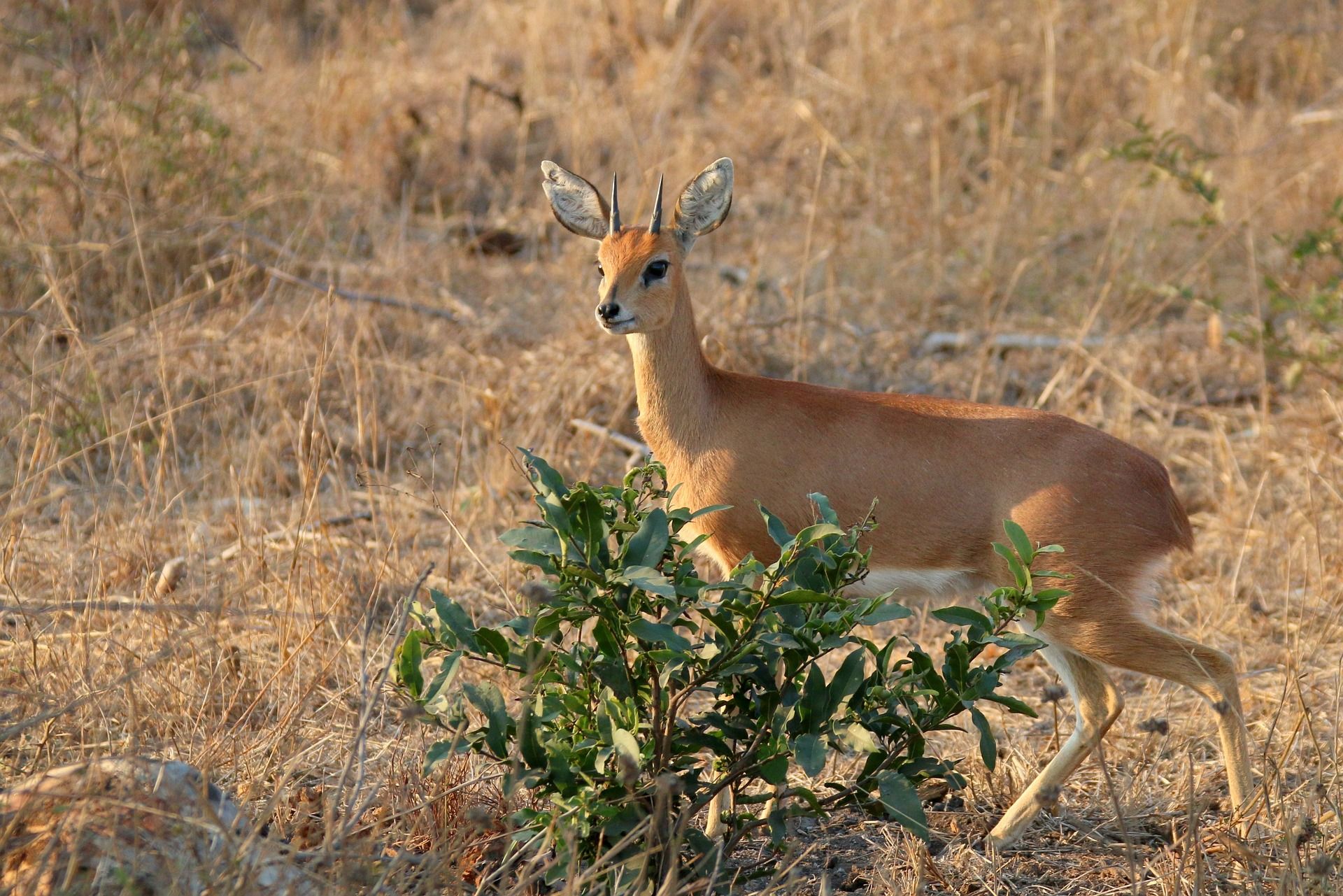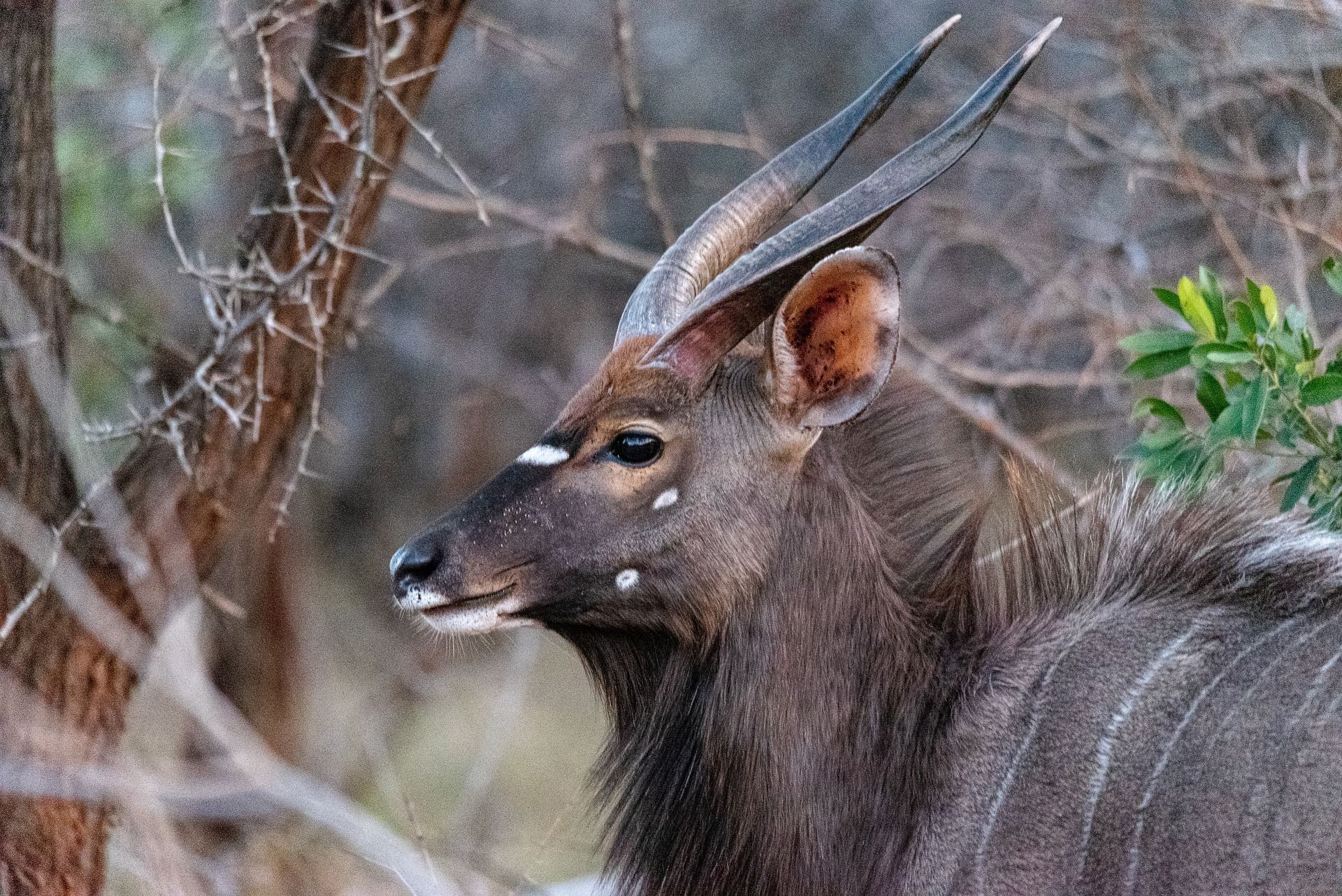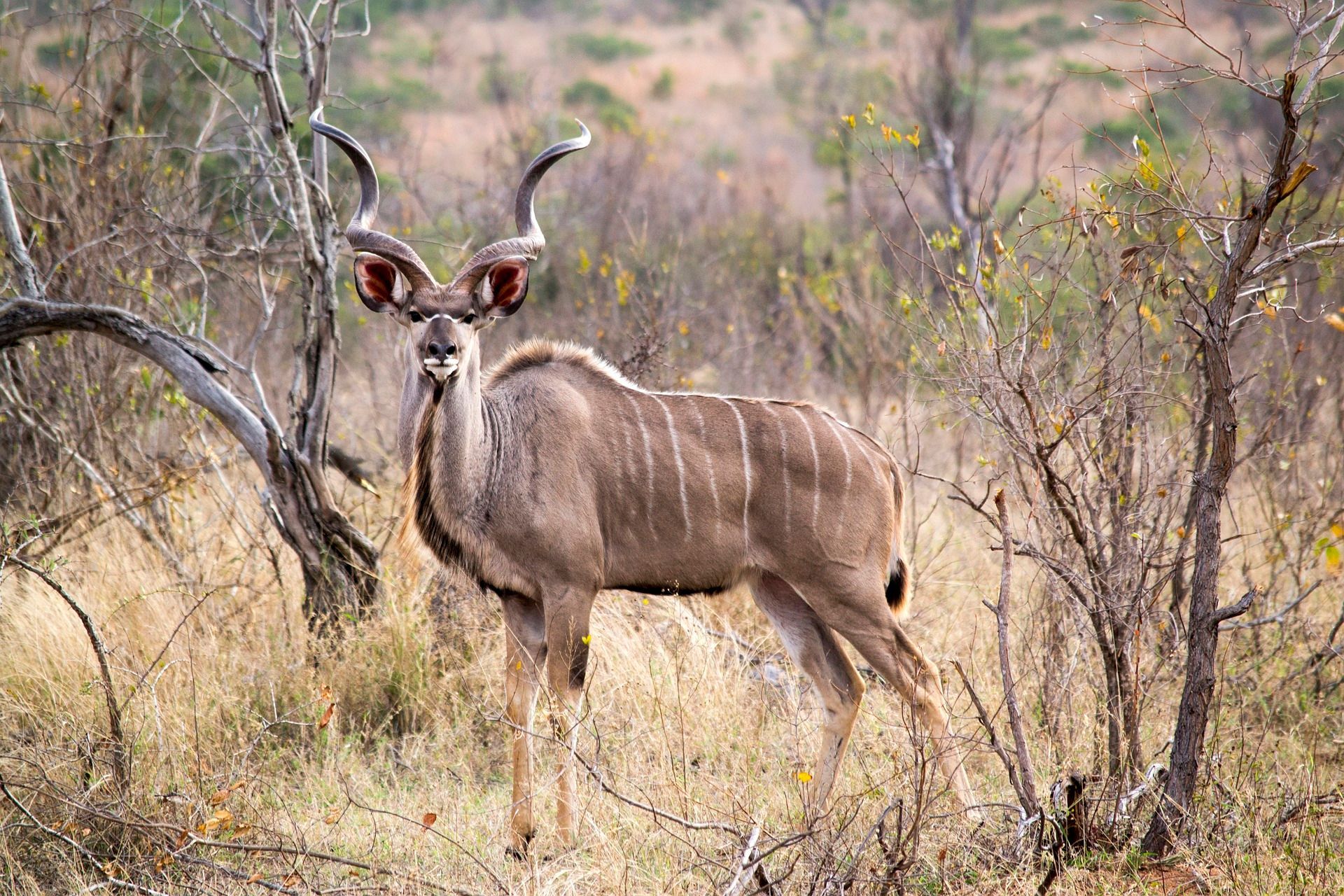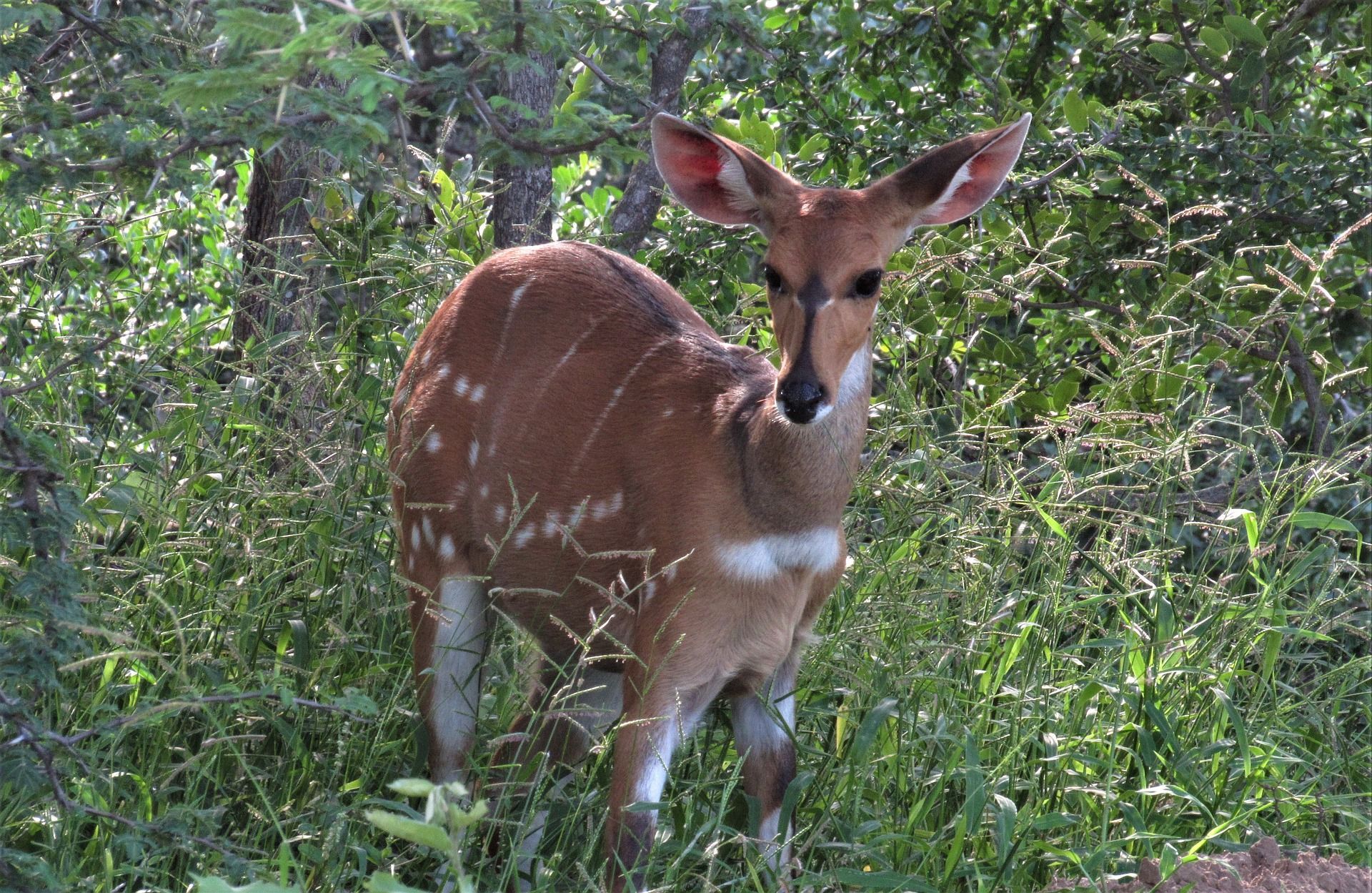Antelopes aplenty!
Fascinating creatures of hoof and horn!
They're on top of the menu for most of the predators on the Klaserie, but there's more to these amazing antelope species than just providing dinner for hungry hunters. Let's have a look at the common antelope species you're most likely to see on safari at Baobab Ridge...
Before we go on to describe the various different antelopes, let's sort out the differences between their sexes and what we call them. First of all, in larger antelope species, the male is termed a bull, and the female a cow. In smaller antelope, the male is referred to as a ram, and the female as a ewe.
The cut off species for this nomenclature is the Nyala. They serve as the marker due to the significant size difference between males and females. The male is classified as a bull, and the female is classified as a ewe. Any male antelope smaller than a nyala is classified as a ram, and female antelope larger than nyala are classified as cows.
Here, then, are the Klaserie's antelope "all-stars"...
Kudu
Despite their large size, kudu exhibit impressive jumping abilities, displaying super agility that allows them to effortlessly clear heights of up to 3.5m, sometimes from a virtually standing start!
These majestic creatures inhabit woodlands, bushlands, hills, and mountains, where they thrive as browsers, feeding on leaves and shoots from various plants. Their elusive nature stems from their large, sensitive ears, which make the shy antelope challenging to approach.
Males are distinguished by their impressive spiralled horns, the number of twists directly correlating with their age. These horns begin growing when the male is six to 12 months old, with one twist at two years and the full two-and-a-half twists at the age of six. Remarkably, the horns are seldom used in defence against predators but in tests of dominance between one another. In wooded habitats, kudu tilt their chins up and lay the horns against their backs, facilitating easy movement through dense bush.
The distinctive brown/greyish coat of greater kudus features white vertical stripes that cover their bodies, serving as natural camouflage from predators. When alarmed, they adopt a motionless stance, becoming exceedingly difficult to spot.
Cows and their offspring form small groups of six to 10 individuals, while bulls are mainly solitary but may form bachelor herds. During the mating season, males join female groups. The calves grow rapidly and achieve a level of independence from their mothers by six months old.
Nyala
Nyala are medium-sized antelope, weighing between 55 and 125 kg. Their name in Zulu translates to "shy one," reflecting their shy and often secretive nature.
Nyala bulls are significantly larger and heavier than ewes. They have a dark brown colour with indistinct white stripes down their torso and a white chevron between their eyes. Their lower legs are tan, and they have a dewlap, sporting a fringe of hair along their underside and a thin crest on their back.
Only male nyalas possess horns, which can reach up to 70cm in length. Female and juvenile nyala are red/brown, featuring distinctive vertical white stripes on their bodies. Ewes do not have horns but display a white marking between their eyes.
During the day, especially in the hottest part, nyala seek shade under trees and typically feed during the evening and early morning. They emit a dog-like bark as an alarm call.
Nyala primarily feed on leaves but also consume grass, twigs, fruits, and flowers. They drink daily when water is abundant but can survive in areas where water is only seasonally available.
Bushbuck
The bushbuck is adorned with geometrically shaped white patches or spots on its most mobile body parts — ears, chin, tail, legs, and neck. Bushbuck rams sport straight, spiralled horns ranging from 50 to 80cm.
Bushbucks are the least social of Africa's antelopes, predominantly preferring a solitary existence. Group associations, aside from a female with her latest offspring, are transient, lasting only a few hours or days. Mature males actively avoid each other, lacking territorial behaviour but defending areas where there is a female in heat.
When alarmed, their reactions vary. In forest or dense bush environments, they may freeze to blend with their surroundings, lie flat on the ground, or emit a series of hoarse barks while bounding away for cover when surprised in open spaces.
Duiker
A small antelope standing just 50cm at the shoulder, duiker rams sport a small set of horns. Their name comes from their propensity to dive into thick bush for cover when alarmed. "Duiker" means diver in Afrikaans! They have a distinctive zig-zag running style, rarely running in a straight line, often darting from side to side.
Duikers are monogamous and fiercely territorial, delineating their boundaries with preorbital glands and other glands situated between their front hooves. Intriguingly, female duikers vigorously repel other females from their territory, and the same holds true for males.
This assertive behaviour persists despite pairs typically being seen together only during mating. At other times, it appears that they prefer maintaining a distance from each other, with males and females staking out different parts of their territory.
Females surpass males in size, but only males boast horns. Remarkably, these little creatures are omnivores, consuming a diverse range of items. Insects, lizards, frogs, and birds are as integral to their diet as berries, fruits, leaves, and grasses. Their adaptability extends to consuming carrion, showcasing an evolutionary trait that enables them to thrive in nearly every habitat across the continent.
Steenbok
The Steenbok is one of Africa's most diminutive antelopes and boasts an average weight of approximately 12kg and a shoulder height of a mere 60 cm. These little creatures sport a stunning golden brown coat, and their most notable feature is their disproportionately large ears in relation to their small heads. Horns are exclusive to the rams, characterised by their smooth, straight, and razor-sharp appearance.
Displaying a highly territorial nature, Steenbok exhibit a varied diet, consuming everything from leaves and grasses to berries and seeds. When food sources are abundant, some Steenbok may form lifelong pairs, although they typically lead solitary lives, only congregating when it's time to mate.
Widespread and abundant, this antelope species is prevalent in Southern Africa, thriving in semi-arid landscapes, savannah bushveld, and grasslands. They prefer areas with ample cover provided by shrubs and grasses and are rarely spotted in rocky or forested terrain.
Remaining active throughout most of the day, Steenbok actively seek shade and shelter as temperatures rise. A motionless Steenbok, standing in the shadow of a bush, becomes nearly invisible, skillfully using its surroundings for camouflage.
Blue Wildebeest
The blue or common wildebeest, also known as a "gnu", is one of Africa's most well-known antelopes thanks to East Africa's Great Wildebeest Migration. While we don't get the same numbers here in the Klaserie, these large and rather odd-looking antelopes are widespread.
Their dark grey hide has a blue hue, hence their name, and is marked with dark vertical bands on the front quarters and a long black mane and a beard of hair hanging from the throat and neck. Both sexes grow short curved horns. In adult bulls the horns are heavily bossed.
Bulls weigh around 250kg and measures up to 1.5m at the shoulders. Cows are slightly smaller. They are seasonal breeders. Births of single calves per cow are synchronised and occur during the summer rainy season after a gestation period of nine months. Calves are born almost tan in colour and can run with the herd within minutes after birth.
Wildebeest are grazers that prefer short grass and often share the landscape with zebras in a phenomenon called succession grazing, where zebras pave the way for wildebeests by consuming taller, tougher grasses, leaving the sorter, softer grasses behind.
Impala
Impalas are the most numerous of our antelope species and organise into three types of herds: female herds, occasionally dominated by changing rams; bachelor herds; and family groups led by dominant rams. Females outnumber males, with twice as many females born annually.
To maintain herd cohesion, impalas release a scent from glands on their heels. Their excellent eyesight, hearing, and sense of smell, coupled with the release of a strong scent from small glands in their heels during danger, enable efficient communication and coordination within the herd.
Impalas are synchronised breeders, with females giving birth collectively around November each year, to coincide with the start of the rainy season. This strategic timing ensures the best chances of survival for impala calves, taking advantage of abundant food and water while benefitting from safety in numbers.
One remarkable aspect of impalas is their impressive leaping ability, as they can jump as high as 10m. Despite their relatively modest length of just over 1.5m, this agility proves essential for their evasion tactics when confronted by predators.
Waterbuck
These sizable antelopes exhibit a robust build, with bulls typically surpassing cows in size by approximately 25 percent and noticeable by their large, lightly curved horns which can reach up to 1m in length.
Characterised by large, rounded ears and noses shaped like hearts, they sport distinctive white patches above the eyes, encircling the nose and mouth, as well as on the throat. But the most noticeable white on this rather fluffy antelope is around its tail, resembling a target or, more humerously, a toilet seat!
The bull's horns are marked by prominent rings, are gracefully curved back and upwards. In territorial disputes, males employ their horns, at times with deadly consequences.
Cloaked in a shaggy brown-gray coat, these animals secrete a pungent oil that helps to waterproof them. Waterbuck do not have a particular breeding season and calves are born throughout the year, although births do tend to peak in the summer months.
